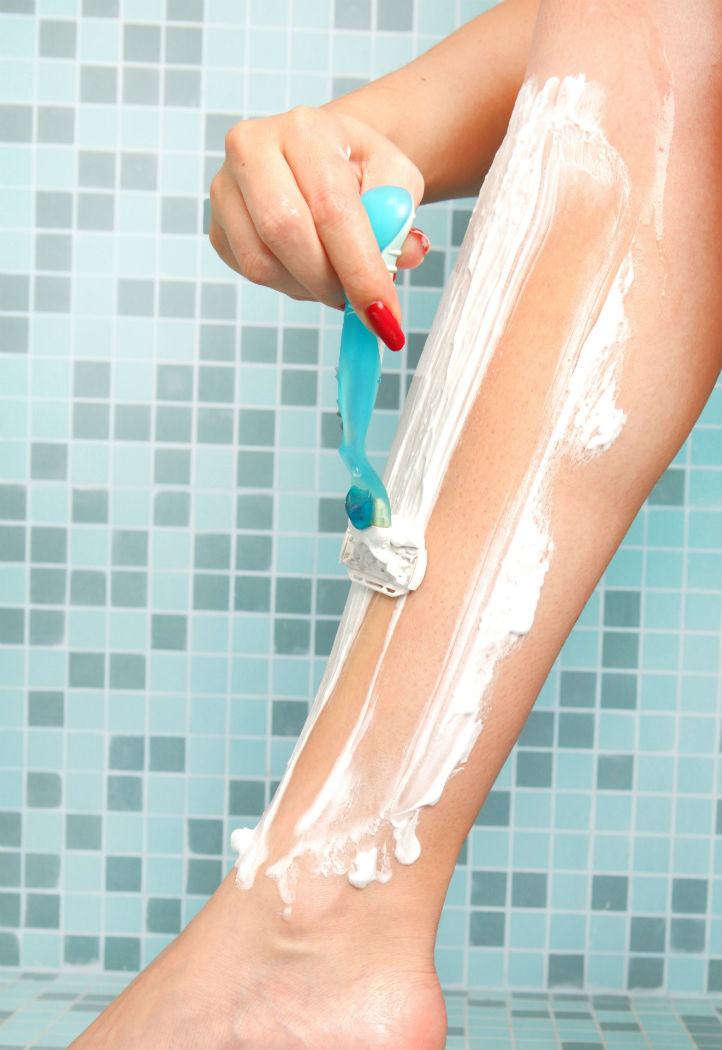Wave Goodbye to Shaving Rash – How to Make Irritated Skin after Shaving a Thing of the Past
9 May 2018

Whether it’s your bikini area, your underarms or your legs, clean-shaven skin just looks beautiful, and shaving has now become part of our daily routine. Yet it aggravates the skin and it’s not uncommon to have irritation, razor burn and shaving rash to contend with after shaving instead of smooth, clean skin. pjur love has put together a few tips on how to do away with those annoying red pimples next time you shave—and reveals a true insiders’ tip, too.
What to bear in mind the next time you shave!
-
It’s all down to the razor blade
To lay the foundations for a good shave, it’s important to give some attention to the razor blade you’re using. Using an old or blunt razor blade can damage your skin, and in the worst-case scenario bacteria can then enter the cuts. That’s why it’s best to make sure you change the blade on your razor—or even the razor itself—regularly. This simple step can help you avoid shaving rash and irritated skin.
-
Never shave dry!
There’s a reason why there are not only countless different razors on the market but also a vast array of shaving foams and shavings gels. Anyone who thinks they don’t need them should think again. Dry shaving irritates the skin particularly badly and should be avoided at all costs. Always reach for a shaving gel or shaving foam instead. Here at pjur love, we’d recommend a shaving gel as most shaving gels are gentler on your skin. If you’d rather use shaving foam, that’s fine too. All that matters is that you apply something to your skin to protect it before shaving. These days it’s even possible to buy razors with the gel integrated in them, which you could try using too.
-
Choosing the right direction
Shaving against the direction of hair growth can irritate the skin as well. That’s why it’s important to shave only in the direction your hair grows—especially if you have sensitive skin. It’s particularly important to follow this rule in your bikini area as the skin there is especially sensitive to shaving rash.
-
Let your hair soften first
It may sound funny at first but it really does help. Soft hair is easier to shave, meaning less irritation. Simply let your hair soften up in lukewarm water for two to three minutes before shaving.
-
Sometimes less is more
This is true in many situations but particularly when it comes to shaving. Frequent shaving only makes shaving rash and razor burn more likely. If you can, you should therefore avoid shaving every day. It’s better to let your stubble grow a few millimetres first and only then shave again. The same also applies if you already have irritated skin or shaving rash. In this case, it’s always recommended that you wait until the skin irritation and shaving rash have died down before shaving again.
-
Applying unnecessary pressure
To get smooth skin, lots of people make the mistake of pressing down with the razor on skin which is sensitive to start with. Yet that’s a bad approach and only irritates the skin unnecessarily.

-
Shaving an area several times—please don’t!
If you go over the same patch of skin with a razor several times, simply to get it extra smooth, it usually has the opposite effect and should be avoided. It only irritates the skin unnecessarily and leaves behind anything but a beautifully shaven patch of skin.
-
Cold water to finish
Cold water can tighten up open pores, and you can use this to your advantage when you’re shaving. Simply shower your freshly shaven patches of skin briefly with cold water—preventing shaving rash.
-
Take care when drying shaven skin
To dry the areas of skin which you’ve shaved, just pat them dry with a clean towel—never rub them dry. It’s also important to make sure the towel you use is clean so that no bacteria are introduced to the clean-shaven areas.
-
No sport and no sun after shaving!
Shaving straight before visiting a water park? Not a good idea. Sunbathing makes us sweat and the salt in sweat irritates the freshly shaved patches of skin, which can result in skin irritation and shaving rash. The skin should first be allowed to recover a little after shaving. This applies both to too much sun after shaving and to sport. Exercise also makes us sweat and can irritate the skin, so it’s a good idea to wait a little while after shaving before doing any sport.
Last but not least: our insiders’ tip to beat shaving rash
These tips will all help reduce the risk of getting shaving rash and irritated skin after shaving. Yet our pjur med AFTER SHAVE spray specifically helps to ensure ideal after-shave skin care. It is free from alcohol and perfumes—which means it doesn’t burn when you apply it. It also contains Aloe Vera and Provitamin B5 to nourish skin after shaving. Simply apply the spray to shaven areas directly after shaving. Two or three sprays will be enough for your underarm or bikini area. You’ll probably need a little more for your legs.
Thanks to these tips and our pjur med AFTER SHAVE spray you can welcome summer with open arms—and without all those unsightly red patches and shaving rashes! Enjoy the sun




